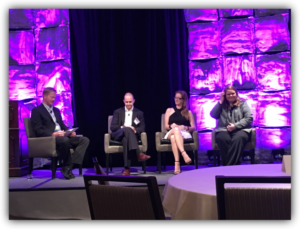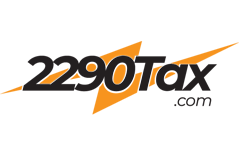Philadelphia May 24, 2016

The ALK Technology Summit this year was a first for me. I usually attend the IFTA and IRP workshops put on by and for the jurisdictions participating in those programs. Those are all about bringing the jurisdictions together so that they enforce the rules equitably. Attendees, mostly government employees and some industry, are interested in standards for audits, recordkeeping, legal updates or changes, and enforcement matters.
The ALK Technology Summit (perhaps as the name suggests) was something else entirely. This wasn’t focused on taxes, and it wasn’t focused on getting people to do things the same way. It was focused on technology, and how it’s being used effectively in todays’ trucking industry.
As you can probably guess, data was the one constant that tied everything else together. Whether the technology was GPS, ELDs and AOBRs, front and/or rear facing cameras, or predictive mapping and routing software with weather and traffic information included, it seems there is indeed more data available than ever before. The question of what data to use and how to use it can be momentous and many fleets are leaving as much as 80% of the available data on the table for want of an answer to that question.
Too much technology can be a distraction for all parties if it’s not handled properly. The volume of messages being sent back and forth between dispatchers and drivers in and of its self is staggering.
Don’t forget, everybody has a job to do, and they didn’t used to need a computer to get it all done. There’s a difference between game changing development, and automating an existing procedure. Both are useful if you can keep from getting bogged down in the process, and if you choose the right directions to move into.
Part of the challenge with “big data” is that there doesn’t seem to be one standard approach to how technology companies return data to their customers. Each company does things their own way, perhaps in part to meet the specific and individual needs of their customers. This means that every idea about what to do with this data has to be implemented individually. There is no one-size-fits-all solution that outlines the useful metrics and makes them easy to use.
Security is another topic of discussion. Who holds the data? What can they do with it? Does it need to be secure? Is it truly secure? Who are my security partners, and does each of them understand their role? Questions like these were thrown around all day, and with no apparent answer. Perhaps again, in order to meet the specific and individual needs of a single company there is a lot of variation.
Everyone does seem to agree that getting the most out of your data, some basic standardization, and security are important issues that should be addressed, but we’re still just on the cusp of this new data era. Only time, and perhaps next years’ summit, will be able to address the questions further.
Don’t forget to follow us on our 2016 travel journey! Follow us on Twitter and Facebook.
Written by Casey Bullard
